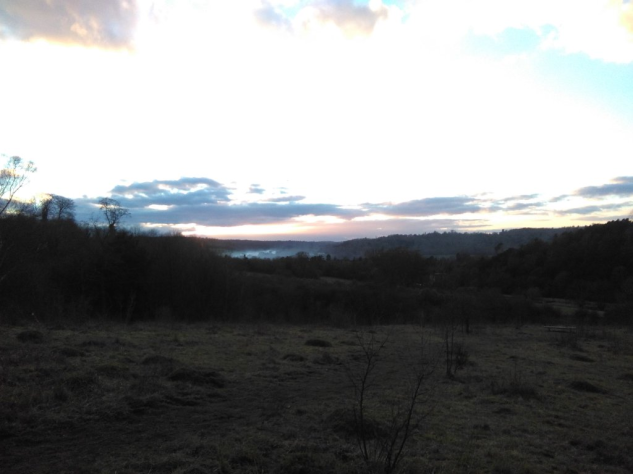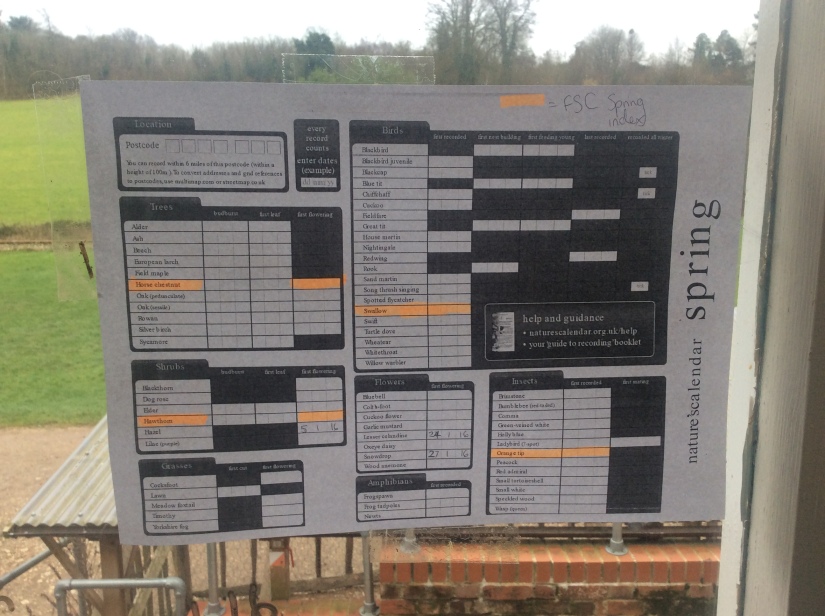By Rowena
It’s been a really busy week, so I’ve only just managed to get round to writing about this now! Last weekend, from the 26th to the 28th February, Ruth and myself travelled to Orielton Field Centre for three days of training in our Lowland Leader Award. It’s about a 5 hour journey to Orielton by car- to use their tagline, it’s not as far as you think! It wasn’t too bad in all honesty. The worst bit was that we had decided to travel over that morning, so we found ourselves with a 5am wake-up call.
 7am at the Severn Bridge
7am at the Severn Bridge
Obviously, the instant we got to Wales it started to rain, but by the time we had got to Orielton (which is in Pembrokeshire), it had amazingly stopped! What was this, a weekend in Wales and no rain?! Somehow, the impossible came true, and we had barely a speckle of rain at all.
After being introduced to the course, the first thing we did was plan our walk for the afternoon with trainer Chris. Tom and Steve had come over from Dale Fort Field Centre (about a 45 minute drive from Orielton) to also attend the course, and knew the area much better than we did, so suggested we went for a 6km walk around Stackpole. There was a picture on the wall of some of the coastline, but it was even more amazing than it looked in a photo.
Barafundle Bay and Stackpole cliffs
Orielton are really lucky to have perfect coastal formations right on their doorstep. It’s very different to the Dorset coastline I got used to living by the sea for a few years. Also fantastic, the birdlife we saw- a kingfisher, goosander and (most excitingly), a pair of chough perched on the clifftops.
Returning to Orielton, we planned our walks for the next couple of days, up in the Preseli Hills. We chose a slightly longer walk for Sunday of 9km, and a walk up the highest hill in Pembrokeshire on Saturday, to the top of Foel Cwmcerwyn. Most of my photos from Saturday are on my camera (perhaps I’ll upload them another time), but I have a few from Sunday, when we went for a walk to Carn Ingli, an old hill fort with spectacular views.
Planning our route
I’ll let the photos speak for themselves, as it was amazing to see. The weather was perfect- very cold, especially being up high, but so clear you could see over to the mountains in north Wales.
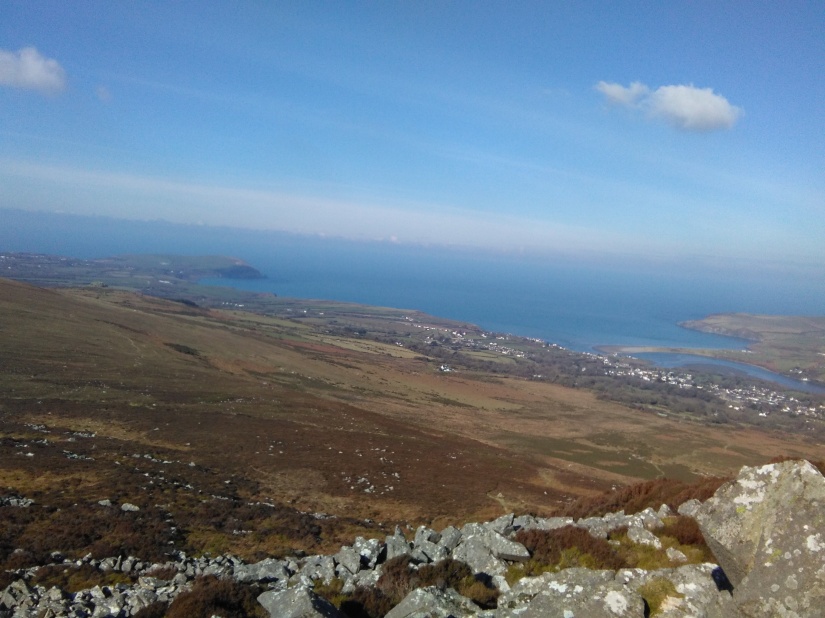
Looking towards Newport from Carn Ingli
Steve, font of all knowledge of the area, told us the story of Carn Ingli while we sat in a sheltered spot behind some rocks for a cup of tea before moving on. Who would want to live up so high?!
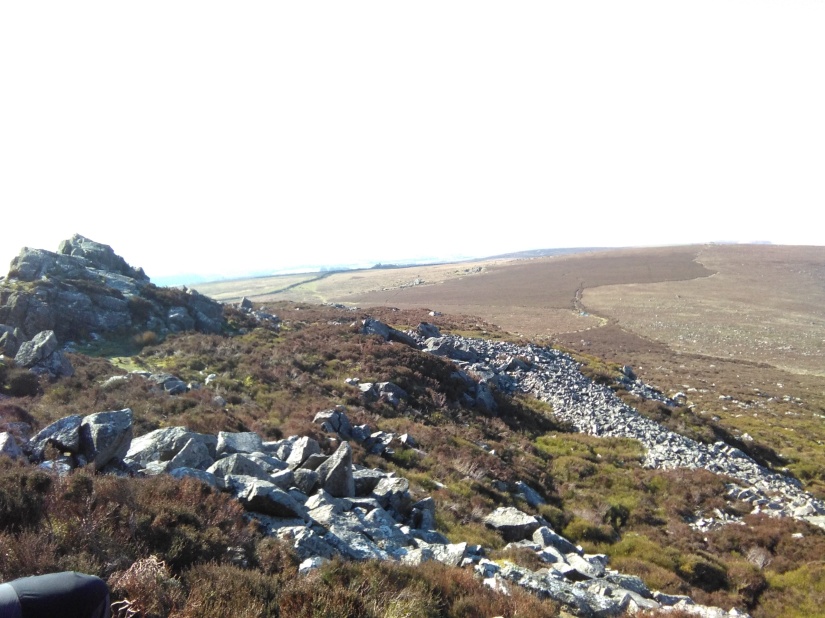
Carn Ingli
The weekend was really awesome, and I for one learnt a lot about how to plan routes, how to pace a walk and how to use a compass to measure distances. I’ll be putting my new knowledge to use when leading groups out back at Juniper in the future- there was lots of consolidating time on Monday to make sure I knew everything inside out on my 7 hour train journey back to Surrey. Thankfully, I had a spare hour before heading to Pembroke station to run and find a geocache local to Orielton though…

Treasure!!


















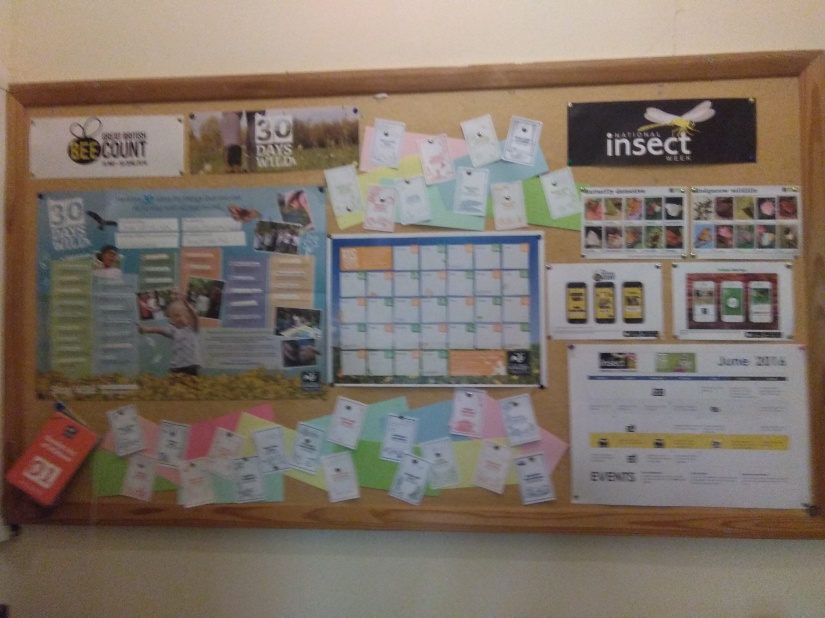























 7am at the Severn Bridge
7am at the Severn Bridge








